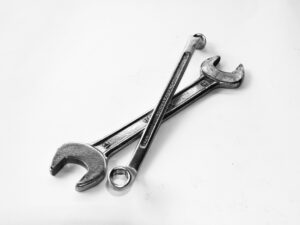
6 Steps to Beat Your Social Media Addiction

The Social Media Trap
Having started the power of planning about 6 months ago, I recently found myself wanting to reach a wider audience. One of the first ways I could think of to achieve this (other than general Google SEO work for the website) was social media. Primarily Instagram, as it was the platform I was most familiar with.
This meant finding a way to regularly post valuable content without eating up too much of my time. At first, I outsourced this. You may see the first 20 posts on my account look very different to the next 20. However, I wasn’t entirely happy with the content. It wasn’t ‘valuable’, it was instead generic and forgettable (despite looking good). So, I decided to start creating content myself. I got a Canva subscription and got to work, utilising Instagram templates and stock videos to get information that I have personally found hugely beneficial to my own time management and organisational skillset.
I now feel the information out there is more actionable and useful for anyone who consumes it. But…
This whole process started to have a negative impact on me. It wasn’t the extra time it took me to create the posts myself. Most of that, honestly, is quite repeatable and I already have a fair few ideas on how I can start to automate it (Chat GPT is one of my biggest allies).
Having not been a consumer of social media at all in the past, (I’ve never had Instagram, TikTok, or Facebook apps) I had avoided falling into the social media trap. The endless scrolling and dopamine binges. However, now I “had to” have the Instagram app. For “work”. For “market research”. To check my follower count, and my progress. I was seeing more and more of my time being eaten up by the algorithm.
I’d go on with the intention to check if I had any comments or followers or to boost a post with an ad and then 20 minutes later I would emerge wondering what had happened.
It was not nice. I also had a weird obsession with the amount of followers I had. I was checking maybe once every 30 minutes. This was my biggest problem as every time I went on, I’d get sucked in by the algorithm again. Checking my followers did nothing for me – it just caused me problems.
How to fix it?

Over time my urge to check my followers dwindled and the novelty of starting my new Instagram account wore off. Luckily for me, I do think that I am one of those people who get bored of social media quickly. I get hooked in and bored in just as quick a time. I will still keep up my regular schedule of posting what I hope is valuable and helpful content relating to time management.
There are still issues though. I still waste a considerable amount of time scrolling, checking my followers, and getting hooked. Amazingly my screen time hasn’t gone up too much on my phone. In the weeks before I started creating my own content my screen time was on average 2h 30 /day. This went up to 3h 30 / day. But the most worrying issue was the productive things I had been doing on my phone were now being eaten up by my hours on Instagram. I was spending 1h 13 minutes per day on Instagram and TikTok combined. Probably about 40 minutes more than I would like.
So how do you create content on social media regularly without getting hooked into the algorithm and wasting your time?
- Accept that you are a consumer and Instagram and Social Media Apps do not distinguish between creators and consumers.
- Create and schedule as much as you can on your computer from Meta business suite, TikTok creator centre or wherever you can that’s not an app designed to steal your time.
- Carefully consider your feelings of validation when you obtain a new follower or a like on a post (easier said than done).
- Realise that time spent checking followers and your general account is much better served by creating valuable content and working on a marketing strategy.
- Delete social media apps if you don’t need them (you can schedule TikTok content without the app).
- I struggled to find any fool-proof “breaking social media addiction” techniques backed up by research. However, I did find this one.
The main takeaway I took was this: “self-control is more about building good habits and being less involved with bad habits, than about being intrinsically good at the effortful inhibition of short-term temptations.”
And I must admit from my own experience that makes sense.
1.) Accept that you are a consumer

You need to use social media apps to post content. This isn’t technically true. You can post on Instagram without having the app. Reels are a bit difficult though. It’s a lot easier and more efficient if you use the app – and the scheduling features it has.
I also think the insights on the mobile app are better than on the web or on the meta business suite app. I don’t think this is a mistake – I firmly believe that meta are quite happy to drive you to the app to get this information. With the knowledge that you’ll end up “accidentally scrolling”. Which is obviously good for them.
They are less concerned with you making good traction on the platform, reaching a wide audience and providing valuable content than they are about getting you to spend time on their social media platform.
It’s not that I wasn’t aware of this when I downloaded these apps, it’s just it wasn’t at the forefront of my mind. Now it is and I try to be conscious of it. I go on the app, do what I went on to do (normally schedule a reel or like a few posts), and no more. But I have to say to myself before exactly that, otherwise I won’t stick to it.
2.) Create and Schedule as much as you can on your computer.

This is obvious. Instagram and TikTok in particular are not made for the computer. I don’t know why – but it just doesn’t suck you in like on a phone. Facebook is a bit different. But… for Instagram and Meta you don’t even have to go on those websites – you can just log in to Meta-business suite. But choosing audio for reels for Instagram via the meta business suite isn’t possible annoyingly.
TikTok again is good, but you can only schedule up to 10 days in advance. Which is a little annoying. But TikTok does let you choose audio and has some good basic video editing tools.
This, as far as I’m concerned is a no-brainer. Do as much on your computer as you can. Stay away from anything you don’t have to do on the apps.
3.) Carefully consider your feelings of validation when you get a like or new follower.

This is an eye-opening one. Still do this day, I get a high when I see I have a new follower or like on Instagram. I know that it shouldn’t make me feel elated like it does yet it does. I shouldn’t rate myself on someone’s opinion of my content, combined with Instagram’s algorithm and the reach my post gets. I do though.
Meditation is such a good tool for this because you can become aware of these feelings and they hold less meaning. I think it’s to do with our ego that we get these feelings of validation from social media. At the end of the day though, the more important thing is to enjoy what you are doing and look at your analytics, reach, and insights on a monthly or weekly basis.
I guess this tip boils down to being mindful. How you achieve that I’m not sure. I try to meditate every day and this seems to help me out here. Although I’m far from perfect at this.
4.) Realise your time is better spent on other things.

It’s so tempting to refresh your social media feeds. Especially when you have just posted a new piece of content and one you are proud of. But… Are you really achieving anything from it? One of a few things can happen: 1.) you are upset you haven’t received a like or gained a follower 2.) you get a dopamine rush from a like or follower 3.) you end up scrolling on social media.
None of these things are productive. So just don’t bother checking. Instead, you could be strategising, creating new content, analysing previous posts, or being more present in whatever activity or conversation you are supposed to be engaged with.
I believe this is just a mindset change that is required. A lot of the time this is solved once the novelty of social media wears off – at least from a content creation perspective.
5.) Delete social media apps if you don’t need them.

This is just common sense. If you don’t need the app get rid. Facebook and TikTok you really don’t need. Instagram maybe – just because the app has some functionality that can’t be gained anywhere else.
Don’t rely on willpower not to go on the apps. Why would you when you can just delete them? Make it hard for yourself to fulfill the urge to check your social media account. Then after a while you should get used to it.
6.) Replace the bad habits with good habits.

The only study I could find on breaking social media addiction was the one I have linked further up. The crux of the message was use good habits to break bad habits. Replace social media by building up a stream of subconscious “healthy habits”. From my own experience of trying to break bad habits I really believe in this.
The results of this study back this up. And it makes sense. Oftentimes when you break a bad habit – it’s simply because you’ve been too busy to even do the bad habit in the first place. Subconsciously doing small healthy actions compounds and you want to carry on. I highly recommend you to read the study for yourself. Science doesn’t lie.
Summary
Whilst this article is coming from my struggles to stay off social media since trying to create content and promote a new brand, I really believe some of these strategies mentioned can be applied to the average social media consumer. Even just understanding some of the points mentioned (such as habit formation, and how social media companies work), can help to shift your mindset and reduce your usage.
If you have more information or want to share what has worked for you to cut down your social media usage let us know. I’d be very interested to see if they work for me as well!
Leaving it there,
Cheers,
Alex













